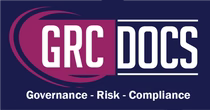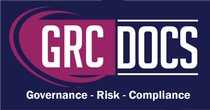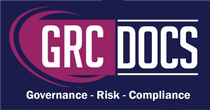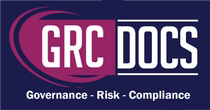Understanding The NIST Risk Management Framework (RMF): A Step-by-Step Guide
Introduction
In today's digital landscape, organizations face an ever-evolving array of cybersecurity threats. To effectively manage these risks and protect sensitive information, it's crucial to implement a structured approach to risk management. One widely recognized framework for managing information security risks is the National Institute of Standards and Technology (NIST) Risk Management Framework (RMF).

It is imperative that you comprehend the NIST Risk Management Framework if you are venturing into the realm of cybersecurity and compliance. The National Institute of Standards and Technology (NIST) created this framework to assist companies, particularly government agencies, in recognizing, evaluating, and successfully managing cybersecurity threats. The NIST Cybersecurity Framework is excellent because it is flexible and offers clear methods for protecting systems and data, regardless of whether you work for the government or the private sector. Adhering to NIST Cybersecurity Framework rules is frequently required for federal entities, making it more than just best practice. The NIST Risk Management Framework (RMF) is, therefore essential to government agencies' ability to remain abreast of changing threats while still adhering to federal norms.
NIST Risk Management Framework RMF Steps
- Step 1: Prepare
The first step in the NIST RMF is preparation. This stage involves laying the groundwork for effective risk management by establishing the necessary policies, procedures, and resources. Key activities in this step include:
1. Establishing Governance Structure: Define roles, responsibilities, and accountability for risk management within the organization. Establish a cross-functional risk management team to oversee the implementation of the NIST Risk Management Framework (RMF) and ensure alignment with organizational goals and objectives.
2. Identifying Assets: Identify and inventory the organization's information assets, including systems, networks, data, and applications. Understand the value and criticality of each asset to prioritize risk management efforts effectively.
3. Understanding Organizational Context: Consider the organization's mission, objectives, stakeholders, and regulatory environment when developing risk management policies and procedures. Tailor risk framework management practices to fit the organization's unique needs and risk profile.
4. Allocating Resources: Allocate sufficient resources, including budget, personnel, and technology, to support risk management activities effectively. Ensure that resources are adequate to address the organization's risk management needs and priorities. By laying the groundwork in the preparation phase, organizations can set the stage for effective risk management throughout the NIST RMF process.
- Step 2: Categorize
The second step is categorization. This stage involves categorizing information systems based on their impact level to determine the appropriate risk management processes and controls. Key activities in this step include:
1. Defining Impact Levels: Determine the potential impact of a security breach or incident on the confidentiality, integrity, and availability of information systems and data. Consider factors such as the sensitivity of the information, the criticality of the system, and the potential consequences of a security incident.
2. Assigning Security Categories: Assign system security categories (low, moderate, high) to information systems based on their impact levels. Use objective criteria to determine the appropriate security category for each system, considering factors such as data sensitivity, system criticality, and regulatory requirements.
3. Selecting Baseline Security Controls: Select baseline security controls from NIST Special Publication 800-53 based on the assigned security categories. Baseline controls provide a starting point for implementing security measures that address common threats and vulnerabilities.
4. Documenting Security Categories: Document the security categories assigned to each information system, along with the rationale for the categorization decisions. Maintain accurate records to support risk management decisions and compliance with regulatory requirements.
By categorizing information systems based on their impact levels, organizations can tailor risk management efforts to focus on the most critical assets and prioritize the implementation of security controls.
- Step 3: Select
The third step is selection. This stage involves selecting and prioritizing security controls to mitigate identified risks effectively. Key activities in this step include:
1. Reviewing Baseline Controls: Review the baseline security controls selected in the categorization phase to ensure they align with the organization's risk framework management goals and objectives. Consider factors such as regulatory requirements, industry best practices, and organizational priorities.
2. Supplementing Baseline Controls: Identify additional security controls beyond the baseline set that may be necessary to address specific risks and threats. Supplement baseline controls with additional measures tailored to the organization's unique risk profile and operating environment.
3. Prioritizing Controls: Prioritize security controls based on their effectiveness in mitigating identified risks, the feasibility of implementation, and the potential impact on business operations. Focus on implementing high-priority controls first to address the most critical risks.
4. Documenting Control Decisions: Document the selection and prioritization of security controls, along with the rationale for each decision. Maintain accurate records to support risk management decisions, compliance with regulatory requirements, and ongoing monitoring and assessment efforts.
By selecting and prioritizing security controls effectively, organizations can focus their resources and efforts on mitigating the most significant risks and enhancing their overall cybersecurity posture.
- Step 4: Implement
The fourth step is implementation. This stage involves implementing selected security controls and measures to mitigate identified risks effectively. Key activities in this step include:
1. Developing Implementation Plans: Develop detailed implementation plans for each selected security control, outlining the specific steps, resources, and timelines required for implementation. Ensure that implementation plans are comprehensive, realistic, and aligned with organizational objectives.
2. Deploying Security Controls: Deploy selected security controls across the organization's information systems, networks, and operations. Ensure that controls are implemented according to established policies, procedures, and best practices.
3. Testing Controls: Test and validate the effectiveness of implemented security controls through various methods, including vulnerability scanning, penetration testing, and security assessments. Identify and address any weaknesses or deficiencies in control implementation to ensure effectiveness.
4. Training and Awareness: Provide training and awareness programs to employees to ensure they understand their roles and responsibilities in implementing and maintaining security controls. Educate employees about the importance of cybersecurity and their role in protecting sensitive information.
By effectively implementing security controls, organizations can reduce their exposure to cybersecurity risks and enhance their resilience to cyber threats.
- Step 5: Assessment
The fifth step is assessment. This stage involves assessing the effectiveness of implemented security controls and measures in mitigating identified risks. Key activities in this step include:
1. Conducting Security Control Assessments: Conduct security control assessments to evaluate the effectiveness of implemented controls in addressing identified risks. Use a variety of assessment methods, including technical testing, audits, and reviews, to validate control effectiveness.
2. Evaluating Control Effectiveness: Evaluate the effectiveness of implemented security controls in mitigating identified risks and addressing security requirements. Assess control performance against established criteria, such as control objectives, security baselines, and regulatory requirements.
3. Identifying Control Deficiencies: Identify any deficiencies or weaknesses in implemented security controls that may impact their effectiveness in mitigating identified risks. Document control deficiencies and prioritize remediation efforts based on their severity and potential impact on security.
4. Documenting Assessment Results: Document the results of security control assessments, including findings, observations, and recommendations for improvement. Maintain accurate records to support risk framework management decisions, compliance with regulatory requirements, and ongoing monitoring efforts.
By regularly assessing the effectiveness of implemented security controls, organizations can identify and address weaknesses proactively, strengthen their cybersecurity posture, and reduce their exposure to cyber threats.
- Step 6: Authorize
The sixth and final step is authorization. This stage involves obtaining authorization for the operation of information systems based on the results of security control assessments and risk assessments. Key activities in this step include:
1. Reviewing Assessment Results: Review the results of security control assessments and risk assessments to determine whether information systems meet security requirements and are authorized to operate.
2. Making Authorization Decisions: Make informed authorization decisions based on the results of security control assessments, risk assessments, and other relevant factors. Consider factors such as residual risks, compliance with security requirements, and organizational priorities when making authorization decisions.
3. Documenting Authorization Decisions: Document authorization decisions, including the rationale for the decisions and any conditions or limitations imposed on system operations. Maintain accurate records to support compliance with regulatory requirements and facilitate ongoing monitoring and assessment efforts.
4. Communicating Authorization Status: Communicate authorization status to relevant stakeholders, including system owners, users, and oversight bodies. Ensure that stakeholders are aware of the authorized status of information systems and any conditions or limitations associated with authorization.
By obtaining authorization for information systems based on rigorous assessment and review processes, organizations can demonstrate compliance with security requirements, reduce their exposure to cybersecurity risks, and ensure the integrity and confidentiality of sensitive information.
Conclusion
The NIST Risk Management Framework provides a structured and systematic approach to managing information security risks effectively. By following the six steps outlined in the Risk Management Framework (RMF), organizations can identify, assess, and mitigate cybersecurity risks proactively, enhance their cybersecurity posture, and protect sensitive information from cyber threats.





